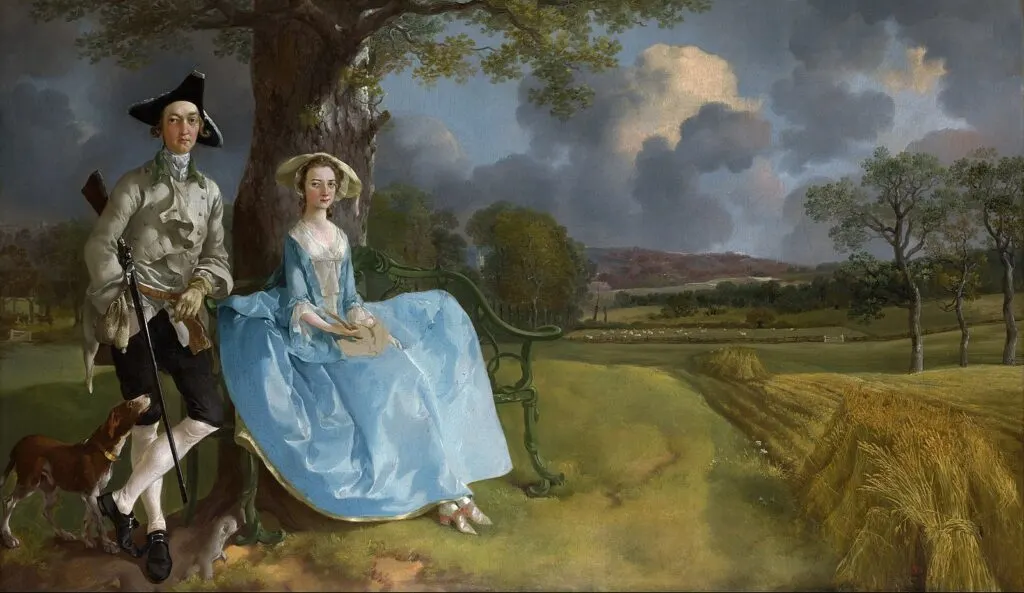This post will invigorate you with knowledge and ignite your passion for the world of famous art.
In addition to its fame, the Mona Lisa has attracted some quirky anecdotes over the years.
The theft created a media frenzy and propelled the paintings fame even further.

Photograph: Courtesy CC/Wikimedia Commons/C2RMF
The Mona Lisas allure and enduring popularity make it a true icon of the art world.
Painted in 1889, this masterpiece showcases Van Goghs signature style with its vibrant and expressive brushwork.
The artwork, measuring approximately 29 x 36 inches, was executed using oil paint on canvas.

Photograph: Courtesy CC/Wikimedia Commons/C2RMF
1, was created in 1871 using oil on canvas.
This enduring image of maternal affection measures approximately 144.3 x 162.4 cm (56.8 x 64 inches).
Its serene simplicity and universal themes have made it an emblem of motherhood and a timeless symbol of art.

Its fame rests in its intimate portrayal and its status as an iconic American artwork.
The artist used oil on beaverboard as the paint medium for this iconic work.
The Scream by Edvard Munch
The Scream by Edvard Munch is an iconic painting created by the Norwegian artist.

Photograph: Courtesy CC/Wikimedia Commons/
It is housed at the National Gallery in Oslo, Norway.
The painting measures 35 3/4 x 29 .
Munchs use of vibrant colors and swirling lines adds to the intense and unsettling atmosphere of the painting.

It is located in the Sistine Chapel in Vatican City, Rome.
Michelangelo used the fresco technique, applying pigments to wet plaster, to bring this monumental artwork to life.
Measuring approximately 2.8 m x 5.7 m, it is an impressive display of his talent.

Photograph: Courtesy CC/Wikimedia/Musée d’Orsay
With its dreamlike imagery and melting clocks, the artwork challenges our perception of time and reality.
The Spanish painters eccentricity and imaginative vision shine through in this iconic masterpiece.
Created with oil on canvas, this masterpiece showcases Vermeers mastery in capturing light and exquisite detail.

Interestingly some have argued the earring is not in fact a pearl but made out of atin metal material.
The painting depicts a couple locked in an intimate embrace, enveloped by ornate patterns and intricate details.
This surrealism style art was painting between 1503 and 1515 with oil on oak panels.

Photograph: Courtesy CC/Wikimedia Commons/The Art Institute of Chicago Museum
This masterpiece showcases Boschs imaginative and surreal vision of heaven, earth, and hell.
The total size of the triptych is 205.5cm x384.9cm (81 x 152).
This painting laid the foundation for the revolutionary Cubist art movement.

The painting measures approximately 4.6 m x 8.8 m, covering an entire wall with its grandeur.
The Last Supper depicts the biblical scene of Jesus and his twelve disciples sharing a meal.
This simple yet profound masterpiece challenges conventional notions of art with its stark black square on a white canvas.

Photograph: Courtesy CC/Wikimedia Commons/
Using primary colors and geometric shapes, Mondrian evokes universal harmony and order.
This iconic piece reflects the artists pursuit of purity and balance, capturing the essence of abstraction and modernism.
Its energetic and chaotic composition, characterized by drips and splatters, redefined the boundaries of art.

This oil masterpiece captures the divine moment of angel Gabriels revelation to the Virgin Mary.
This Renaissance artwork offers a delightful snapshot of daily life, revealing Bruegels keen observation and social commentary.
The fusion of art and science in this work continues to inspire and symbolize the beauty of human form.

Photograph: Courtesy CC/Wikimedia Commons/
Its casual elegance and vibrant brushwork evoke a sense of spontaneity and intimacy.
Its intricate details and serene beauty embody the artists deep connection to the English countryside.
This oil masterpiece conveys a dramatic and spiritual atmosphere, reflecting El Grecos distinctive style and emotional intensity.

The contrast between light and shadow and the unique perspective contribute to its mystique and enduring allure.
Coles visionary portrayal and allegorical elements make it a seminal example of American landscape art.
This Romantic artwork captures the sublime vastness of nature, emphasizing the insignificance of human presence.

Photograph: Courtesy FairUse/WikiArt/olaly
The monks solitary contemplation against the backdrop of sea and sky evokes a sense of existential awe and introspection.
The citys iconic landmarks and luminous waterways come alive, showcasing Canalettos brilliance as a vedute painter.
Painted in 1890, this oil masterpiece reflects his emotional intensity.

Photograph: Courtesy CC/Wikimedia Commons/Mauritshuis
Painted in 1889, this oil artwork captures the forests tranquility and animal life.
The collaborative masterpiece reveals their mastery in depicting natures harmony.
This abstract artwork embodies the Suprematist movements essence, emphasizing geometric shapes and primary colors.

Malevichs groundbreaking approach revolutionized modern art.
Created in 1942-43, this abstract masterpiece celebrates New York Citys dynamism.
The grid of colored squares reflects urban rhythm and Mondrians quest for universal harmony.
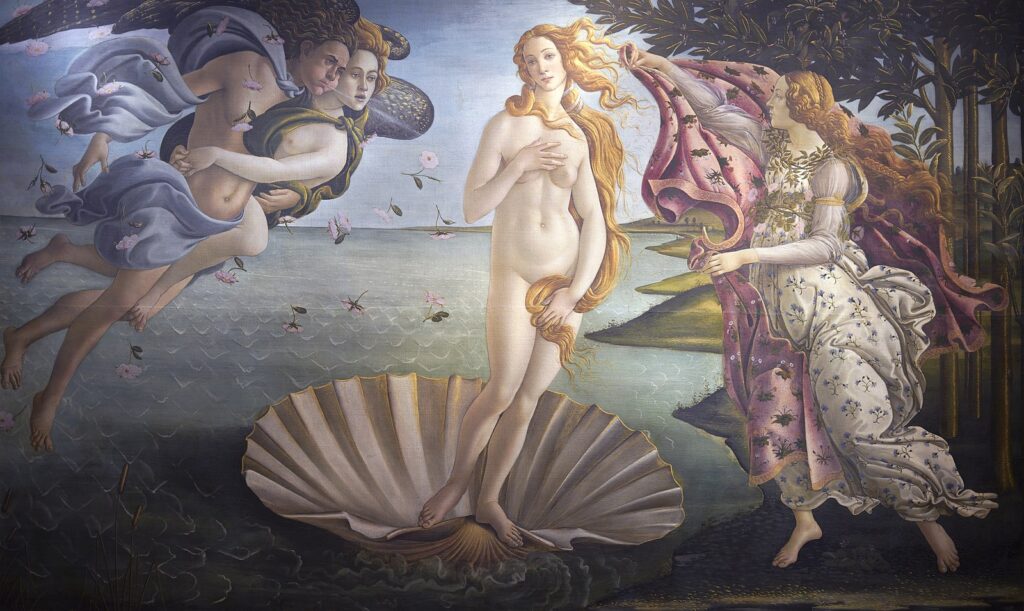
Photograph: Courtesy CC/Wikimedia Commons/Mauritshuis
Painted in 1913, this oil artwork embodies his synesthetic approach, translating music into visual forms.
The vibrant colors and dynamic forms ignite emotional resonance and invite diverse interpretations.
Painted in 1952, this oil artwork showcases her innovative soak-stain technique.

The luminous colors and fluid forms evoke a sense of expansive nature and emotional depth.
61 (Rust and Blue) by Mark Rothko
Mark Rothkos No.
Painted in 1953, this oil masterpiece invites contemplation on colors emotional impact.

Photograph: Courtesy CC/Wikimedia Commons/Txllxt TxllxT
The subtle interaction of rust and blue hues creates a transcendent and meditative experience.
Created in 1947, this mixed-media artwork challenges traditional forms.
Embedded objects and gestural paint strokes form a complex texture, revealing Pollocks revolutionary approach.

Amidst vibrant blooms, Van Goghs distinctive brushwork captures his inner turmoil and reverence for nature.
The artworks vivid colors and expressive style reveal his unique artistic voice.
Painted in 1880-1883, this oil artwork portrays a woman amidst lilacs beauty.

Photograph: Courtesy CC/Wikimedia Commons/Google Art Project
Cassatts tender depiction and play of light celebrate everyday moments and female subjectivity.
Painted in 1614, this oil masterpiece showcases his meticulous detail and exquisite colors.
The arrangement of various blooms epitomizes Dutch Golden Age floral still life.

The paintings remarkable realism and delicate rendering of textures have earned it a place of admiration among art enthusiasts.
Painted during the surrealist movement, this oil painting encapsulates Kahlos emotional depth and unapologetic self-expression.
Its fame lies in its poignant exploration of identity and cultural duality.

Photograph: Courtesy CC/Wikimedia Commons/The Prado in Google Earth
Painted from 1929 to 1935 in fresco style, this masterpiece adorns the National Palace in Mexico City.
Its fame stems from its grand scale, detailed narrative, and celebration of Mexican heritage.
Its fragmented forms and bold colors exemplify Picassos revolutionary approach to depicting reality through multiple perspectives.

Its fame rests in its innovative Cubist style and exploration of artistic possibilities.
This serene scene of leisure along the Seine River is an iconic representation of 19th-century Parisian life.
Its fame lies in its meticulous technique and its pioneering role in the Pointillist movement.

Photograph: Courtesy CC/Wikimedia Commons/TTaylor
Picassos Cubist style and his bold use of monochromatic tones enhance the emotional impact of the painting.
These enchanting oil paintings, with varying dimensions, depict serene water gardens in Giverny, France.
Monets exploration of light and color, coupled with his unique perspective, captures the fleeting beauty of nature.

Their fame stems from their revolutionary style and their profound influence on the art world.
Riveras bold colors and compassionate narrative contribute to its enduring impact.
Its fame lies in its depiction of Mexican identity and its role in the Mexican Muralism movement.

Courtesy of www.PabloPicasso.org
Van Goghs dynamic use of light and color elevates the ordinary scene into a vibrant nocturnal masterpiece.
Its fame rests in its evocative atmosphere and its reflection of van Goghs emotional intensity.
Magrittes exploration of identity and hidden truths continues to intrigue and challenge viewers worldwide.

Its fame lies in its mysterious symbolism and its embodiment of Surrealist principles.
5, 1948 by Jackson Pollock
No.
Its fame lies in its innovative approach to composition and its representation of the artists emotional intensity.

Photograph: Courtesy CC/Wikimedia Commons/
Renoirs loose brushwork and depiction of leisure capture the essence of Impressionism.
Its fame rests in its celebration of everyday life and its portrayal of a fleeting moment.
Aivazovskys mastery of light and sea captures the sublime power of nature.

Its fame rests in its evocative depiction of the seas majesty and danger.
Leonardos precision and sfumato technique create a sense of ethereal beauty.
Its fame lies in its rarity as one of Leonardos few surviving paintings and its record-breaking auction price.

Photograph: Courtesy CC/Wikimedia Commons
Hockneys bold colors and flat forms epitomize Pop Art.
Its fame rests in its vibrant depiction of modern leisure and its influence on contemporary art.
Measuring around 91 x 162 cm (35.8 x 63.8 inches), it portrays a reclining female figure.

Photograph: Courtesy CC/Wikimedia Commons/Dominic Robinson
Ingres meticulous draftsmanship and exoticism reflect Neoclassical and Orientalist influences.
Its fame lies in its idealized sensuality and its subversion of traditional female nudes.
Wyeths meticulous rendering and sense of isolation characterize American Realism.

Its fame rests in its haunting mood and its resonance as an emblem of rural American life.
With delicate blossoms set against a vivid blue sky, van Goghs creation celebrates new beginnings and hope.
The expressive brushwork and vibrant colors contribute to the paintings timeless fame.

Photograph: Courtesy CC/Wikimedia Commons/Metropolitan Museum of Art
Lewis endearing depiction of three cats against a colorful background exudes warmth and innocence.
Despite physical challenges, she created remarkable works that resonate with art enthusiasts worldwide.
This painting is famous for capturing the Fauvist spirit, where color takes precedence over traditional representation.

Its boldness and innovative approach mark it as an iconic piece of early 20th-century art.
This stunning fresco covers the ceiling of the Sistine Chapel in Vatican City.
Michelangelos exceptional use of fresco technique creates a mesmerizing visual narrative, including the renowned Creation of Adam.

Photograph: Courtesy CC/Wikipedia/Tate.org.uk
This painting, an example of Mannerism, depicts the final judgment as described in Christian theology.
Spanning a colossal scale, it showcases Michelangelos anatomical precision and emotive figures.
The paintings intricate detailing and spiritual significance contribute to its enduring fame.

The paintings vibrant colors, depiction of leisure, and skillful capture of light showcase Renoirs mastery.
Its portrayal of a convivial atmosphere makes it an iconic representation of the Belle Epoque.
The works graceful execution, delicate palette, and depiction of carefree indulgence reflect the Rococo spirit.

Photograph: Courtesy CC/Wikimedia/TheYorckProject
Its combination of playfulness and sensual undertones has solidified its status as a quintessential Rococo masterpiece.
Its dramatic composition, emotive use of color, and patriotic symbolism capture the spirit of the time.
The paintings representation of political fervor and the fight for freedom has made it an enduring emblem of revolution.

Its heroic style, meticulous detail, and symbolic elements reflect Neoclassical art.
The paintings idealized portrayal of leadership and ambition aligns with Napoleons self-image, contributing to its lasting impact.
Musicians by Caravaggio
Caravaggios Musicians, painted around 1595, is a significant work of Italian Baroque art.

Photograph: Courtesy CC/Wikimedia/TretyakovGallery
Caravaggios distinctive use of light and shadow, as well as his naturalistic portrayal, characterizes the Baroque aesthetic.
Rousseaus dreamlike imagery, vibrant colors, and intricate details contribute to the paintings enigmatic allure.
This Surrealist artwork powerfully conveys urban isolation and emotional turmoil.

The paintings innovative style and Schieles unique artistic vision have solidified its significance.
Flaming June is celebrated for its exquisite use of color and the dreamlike quality it imparts to the subject.
The paintings geometric shapes and vibrant palette demonstrate Cezannes revolutionary approach to depicting reality.

Photograph: Courtesy CC/Wikimedia/GemeentemuseumDenHaag
Sher-Gils fusion of Western techniques with Indian themes characterizes the Modernist movement.
This contemporary realist approach creates an uplifting ambiance, inspiring viewers with a hopeful perspective.
Chemonskis attention to detail and naturalistic style depict the warmth and vibrancy of the season.

The paintings sleek lines and bold colors exemplify the spirit of the Roaring Twenties.
Created with oil on walnut wood, this portrait exudes da Vincis mastery of light and shadow.
The subject, Cecilia Gallerani, holds an ermine, symbolizing her purity.

Photograph: Courtesy CC/www.Jackson-Pollock.org
Stanczyk by Jan Matejko
Jan Matejkos Stanczyk is a significant work in Polish art history, completed in 1862.
Matejko captures a blend of history and emotion, highlighting Polands complex past.
The paintings realistic detail and historical depth place it firmly within the realm of Realism.

Braques innovative approach, developed in collaboration with Picasso, revolutionized art.
Violin and Candlestick embodies the essence of Cubism, challenging traditional representation and paving the way for modern abstraction.
Painted around 18981900, this oil-on-canvas artwork measures approximately 46 x 55 cm (18.1 x 21.7 inches).
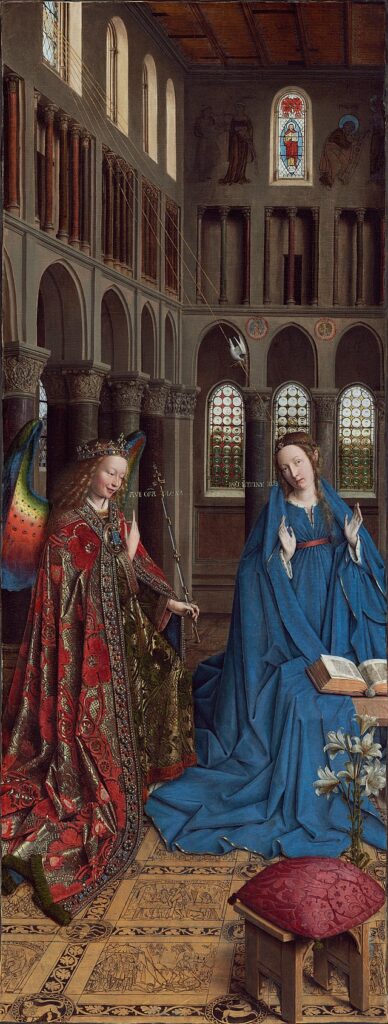
Photograph: Courtesy CC/Wikimedia/National Gallery of Art, Washington, D. C
The painting exemplifies Cezannes influence on modern art and his role in bridging Impressionism and Cubism.
This large-scale oil-on-canvas painting measures approximately 208 x 264 cm (82 x 104 inches).
Depicting a nude woman picnicking with clothed men, the artwork challenges traditional norms.

Manets influence on modern art is evident in these meticulously crafted works.
The delicate interplay of color and meticulous details reflect Hiroshiges mastery of printmaking.
Completed in 1780, this oil-on-canvas masterpiece depicts three aristocratic sisters: Charlotte, Elizabeth, and Anna Waldegrave.

Photograph: Courtesy CC/Wikimedia/http://press.khm.at
Artemisia, a pioneering female artist, skillfully captures Susannas vulnerability and the menacing presence of the two elders.
The painting measures approximately 28.74 x 36.22 inches (73 x 92 cm).
Gauguins use of vibrant colors and bold lines reflects his fascination with the culture and landscape of Tahiti.

Hayezs use of rich colors and dramatic lighting evokes deep emotion and adds to the paintings allure.

Photograph: Courtesy CC/Wikimedia/Luc Viatour/https://Lucnix.be


Photograph: Courtesy CC/Wikimedia/art database


Photograph: Courtesy CC/Wikimedia/EwHxeymQQnprMg


Photograph: Courtesy CC/Wikimedia/allpaintingsstore.com


Photograph: Courtesy CC/Wikimedia/Google Arts & Culture


Photograph: Courtesy CC/Wikimedia/The AMICA Library

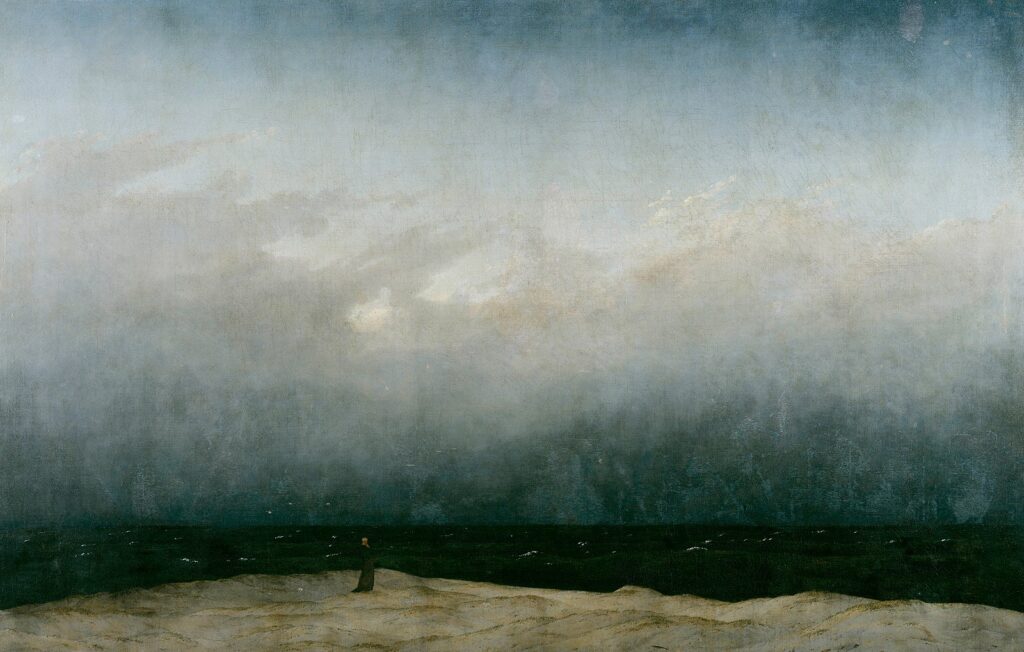
Photograph: Courtesy CC/Wikimedia/Google Arts & Culture


Photograph: Courtesy CC/Wikimedia/https://collections.louvre.fr


Photograph: Courtesy CC/Wikimedia/Google Cultural Institute

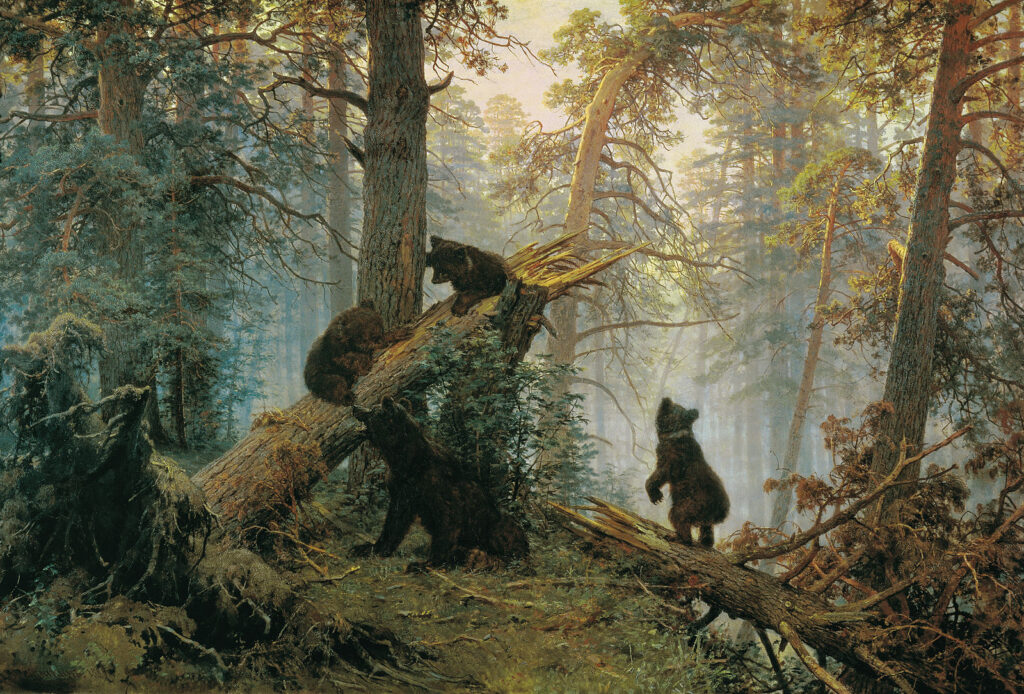
Photograph: Courtesy CC/Wikimedia/Hermitage


Photograph: Courtesy CC/Wikimedia/Forbes


Photograph: Courtesy CC/Wikimedia/en.Wikipedia


Photograph: Courtesy CC/Wikimedia/www.wassilykandinsky.net




Photograph: Courtesy WikiArt/mark-rothko/


Photograph: Courtesyjackson-pollock.org


Photograph: Courtesy CC/Wikimedia/Google Cultural Institute
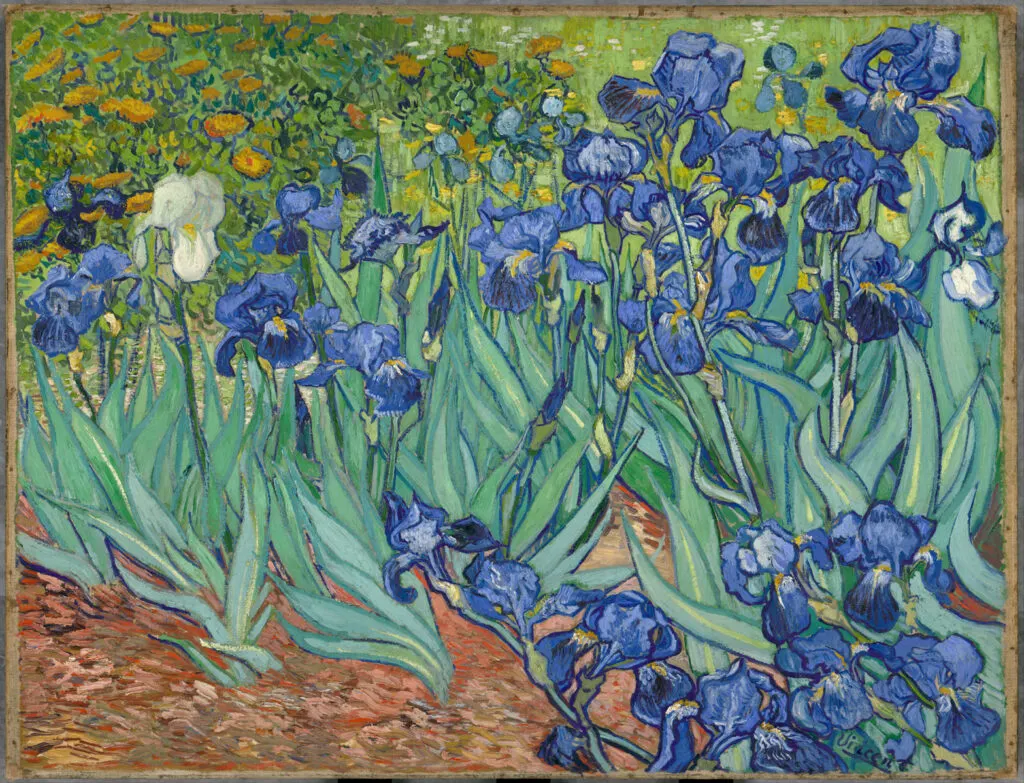

Photograph: Courtesy CC/Wikimedia/


Photograph: Courtesy CC/Wikimedia/Google Cultural Institute


Photograph: Courtesy CC/Wikimedia/National Gallery of Art, Washington, D. C., online collection

Photograph: Courtesy CC/Wikimedia/https://purl.org/nga/collection/artobject/61382


Photograph: Courtesy CC/Wikimedia/NgGmZAZW17zfhw at Google Cultural Institute

Photograph: Courtesy CC/Wikimedia/NgELdACk3I8Jkg—Google Arts & Culture

Photograph: Courtesy CC/Wikimedia/http://www.blakearchive.org/exist/blake/archive/object.xq?objectid=europe.k.illbk.01&java=no


Photograph: Courtesy CC/Wikimedia/Národní galerie


Photograph: Courtesy CC/Wikimedia/Lloyd, Brigitte Gastel.“Portrait of the Artists


Courtesy of www.FridaKahlo.org


Photograph: Courtesy CC/Wikimedia/Angierodr


Courtesy of www.PabloPicasso.org

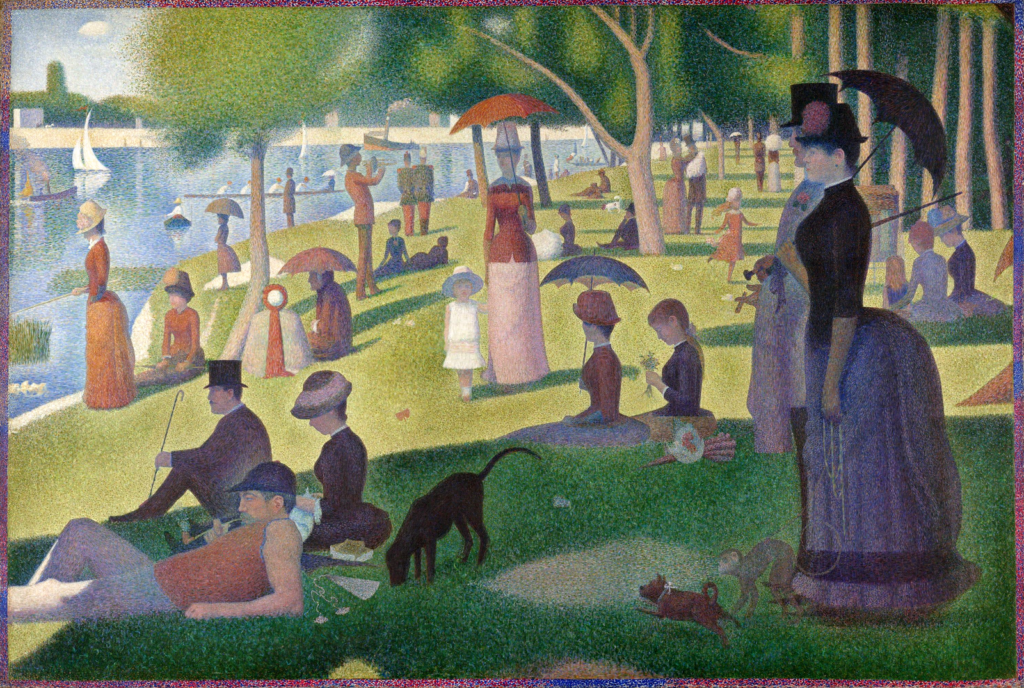
Photograph: Courtesy CC/Wikimedia/Art Institute of Chicago


Photograph: Courtesy CC/Wikimedia Commons/


Photograph: Courtesy CC/Wikimedia/Metropolitan Museum of Art


Photograph: Courtesyof www.DiegoRivera.org


Photograph: Courtesyhttp://allpaintingsstore.com/ADC/Art.nsf/O/5ZKGA3
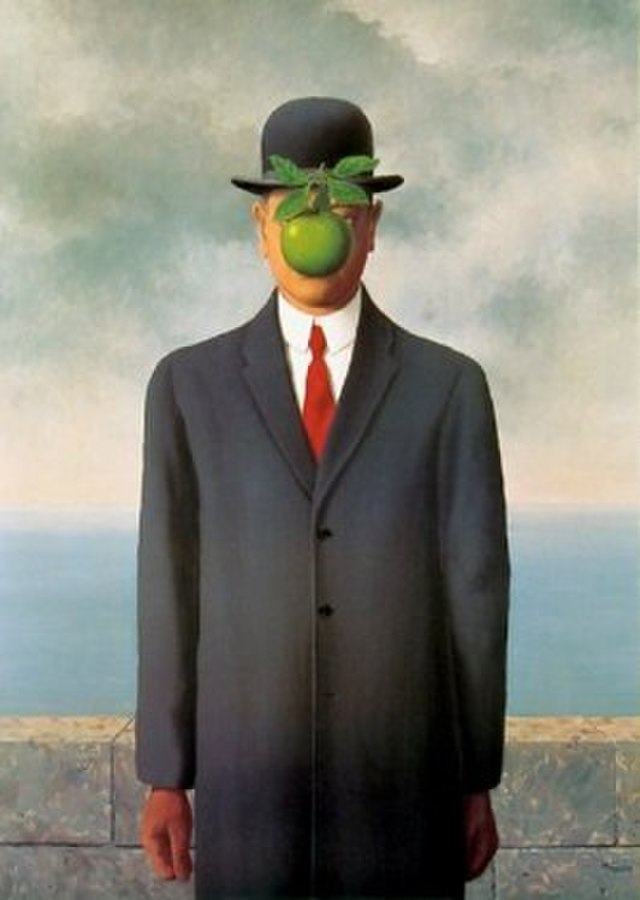
Photograph: Courtesyhttps://www.flickr.com/photos/nat507/42980507512/

Photograph: Courtesy No. 5, 1948 – Wikipedia:en.wikipedia.org


Photograph: CourtesyJapan Times


Photograph: CourtesyGoogle Cultural Institute
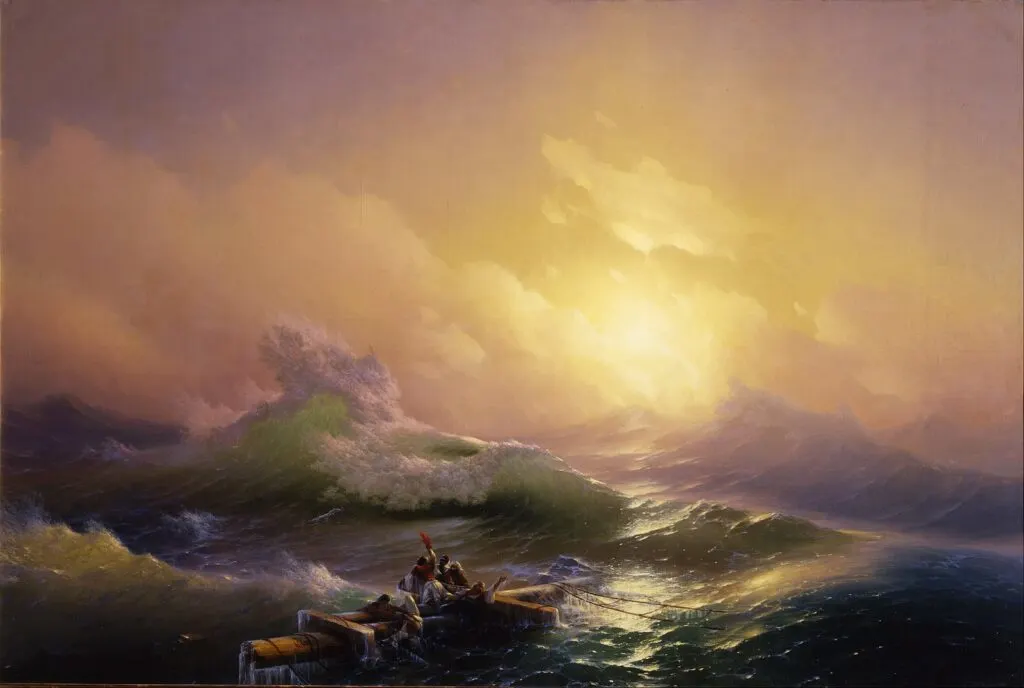

Photograph: CourtesyGetty Images


Photograph: Courtesy Collection of Tate, London

Photograph: Courtesywartburg.edu


Photograph: courtesyChristina’s Worldby Andrew Wyeth,1948, via Museum of Modern Art, New York

Photograph: Courtesy CC/Wikimedia/The Yorck Project (2002)


Photograph: CourtesyResolver


Photograph: CourtesyWikiart.com


Photograph: courtesyLe Bonheur de vivre Barnes


Photograph: courtesy CC/Wikimedia/Jörg Bittner Unna


Photograph: Courtesy CC/Wikimedia


Photograph: Courtesy CC/Wikimedia


Photograph: Courtesy CC/Wikimedia/Galería online

Photograph: Courtesy CC/Wikimedia/ArtsDots.com


Photograph: Courtesy CC/Wikimedia/tiqets


Photograph: Courtesy/The Wallace Collection


Photograph: CourtesyDennis Jarvis – Liberty Leading the People


Photograph: Courtesy CC/Wikimedia


Photgraph: CourtesyMetMuseum.org


Photograph: CourtesyOakenchips


Photograph: Courtesy CC/Wikimedia/Web Gallery of Art


Photograph: courtesynpr.org

Photograph: Courtesyragandbonebristol.com


Photograph: courtesywww.FridaKahlo.org


Photograph: courtesy CC/Wikimedia/The Yorck Project


Photograph: courtesy CC/Wikimedia/ArtDaily.com


Photograph: courtesy CC/Wikimedia/Art Renewal Center


Photograph: courtesy CC/Wikimedia/forum.netfotograf.com


Photograph: Courtesy CC/wikimedia/Rawpixel


Photograph: Courtesy CC/Wikimedia
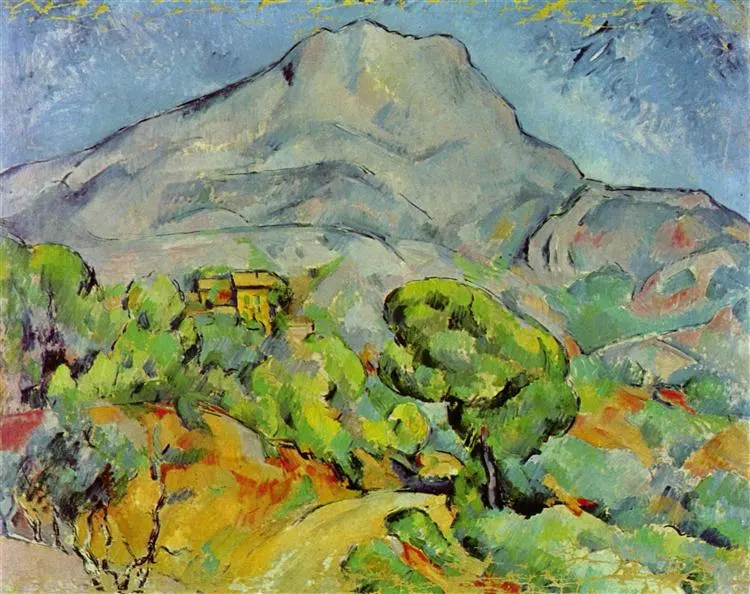

Photograph: CourtesyGreatbanyanart.com

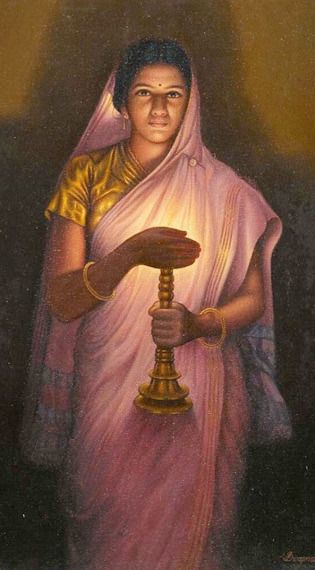
Photograph: Courtesyswadesi.org


Photograph: CourtesyGoogle Arts & Culture

Photograph: CourtesyReddit


Photograph: Courtesy CC/Wikimedia/Frank Zöllner


Photograph: Courtesy CC/Wikimedia/cyfrowe.mnw.art.pl

Photograph: courtesysfmoma.org


Photograph: courtesy CC/Wikimedia/Paul Cézanne

Photograph courtesy: CC/Wikimedia/wartburg.edu


Photograph: courtesy CC/Wikimedia/user:Rlbberlin


Photograph: courtesyHubert Eyck/The Bridgeman Art Library/Getty Images


Photograph: courtesyartnet.com


Photograph courtesy:cultivatedinfludence.net

Photograph courtesy:artsmia.org


Photograph: courtesy CC/Wikimedia/Metropolitan Museum of Art


Photograph: courtesy CC/Wikimedia/paintingMania


Photograph Courtesy CC/Wikimedia/Google Arts & Culture


Photograph Courtesy CC/Wikimedia/nationalGalleries


Photograph Courtesy CC/Wikimedia/Web Gallery of Art


Photograph Courtesy CC/Wikimedia/famousPaintings


Photograph Courtesy CC/Wikimedia/Google Arts & Culture

Photograph Courtesy CC/Wikimedia/Wikipedia Loves Art photo pool


Photograph Courtesy CC/Wikimedia/The Yorck Project


Photograph Courtesy CC/Wikimedia/Thomas Gainsborough – Mr and Mrs Andrews.jpg
